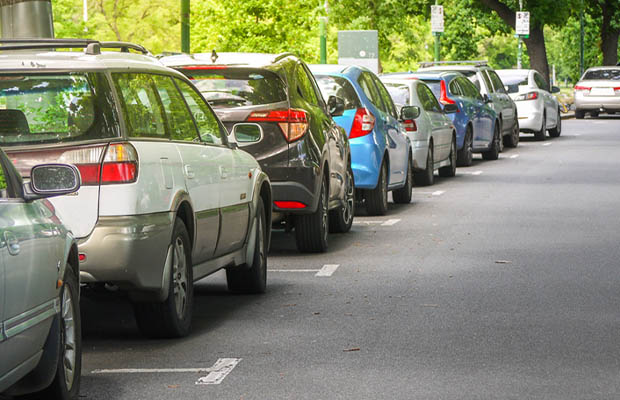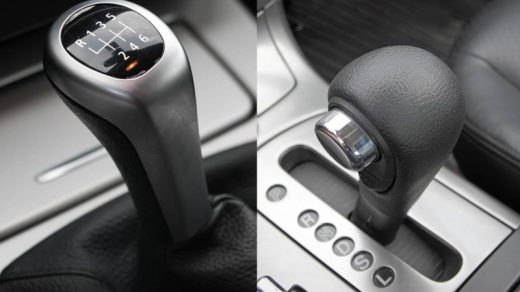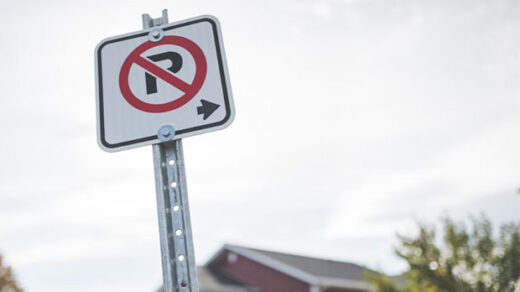For your road test in Alberta, you’ll also need to be proficient in parallel and hill parking, as well as angle and perpendicular parking. How you enter and exit these parking spaces will affect your score.
Angle parking is a type of roadside car parking where the parking spaces are arranged at an acute angle to the direction of approach, allowing the driver to enter a space easily and later reverse back out.
Follow these steps to park like a pro if you want to improve your abilities or just need some practice. Information on parallel parking, perpendicular parking, and angle parking is included in this article. Let’s start!
Table of Contents
What Is Angle Parking?
Vehicles are parked in a line at an angle when angle parking. In most cases, the parking angle corresponds to the direction in which vehicles enter the space. This kind of parking is one of the simplest to execute because of its angled nature.
How To Angle Park?
Angle parking is when you pull into a spot that is at a 45-degree angle with the curb. You will almost always enter an angled parking space on your right, with a few exceptions on one-way streets. Take the following actions after finding an angled parking spot. Reverse these instructions if you’re pulling into a space on the left:
- As you approach the open space, activate your right signal and slow down. Leave approximately 1.5 meters of space between yourself and the parked vehicles while keeping your vehicle parallel to the curb.
- When you can see the left side of the vehicle that is parked to the right of the empty space, turn sharply to the right.
- Look towards the center of the parking space while moving forward to make sure your vehicle is centered in the space.
- When you are about halfway into the parking space, straighten your wheels and continue moving forward.
- Keep an eye on the front bumper and right rear bumper of your vehicle and leave comfortable space on either side.
- Continue moving forward until you are within 50 centimeters of the curb and shift into the park.
Safely Back Out When Angle Parking
- As you reverse, watch out for other vehicles that can be hard to see
- You must yield to traffic and pedestrians already on the road
- Check by looking through your windows.
- Move backward slowly, and be ready to stop if necessary.
- When your front bumper clears the rear of the vehicle to your left, turn your steering wheel sharply to the right.
- Continue reversing into the first lane behind your vehicle.
- Stop when your vehicle is parallel to the curb.
- Drive forward in the lane you reversed into.
What Is Perpendicular Parking?
Perpendicular parking spaces are at a 90-degree angle to the curb, and it’s one of the more common ways to park. These spaces can be accessed from either the left or the right, but if you’re in a parking lot, it might be simpler to enter from the left because those spaces typically have more room to turn comfortably.
How To Perpendicular Park Between Two Cars?
Cars are parked side by side, perpendicular to a curb or aisle, in this type of parking. Perpendicular parking takes up less space and is commonly used in parking lots and garages
One of the more popular parking options is use perpendicular parking to park, which is 90 degrees off the curb. These spots can be accessed from either the left or the right, but if you’re in a parking lot, it might be simpler to access the spaces on your left since they typically have more room to turn in. Always give way to oncoming traffic. To park securely in the constrained space you have to maneuver in if a perpendicular space on your right is your only option, take the following steps:
- Before turning into the empty space, make sure you have a couple of meters of space between your vehicle and the vehicles parked to your right
- Pull up until your front bumper is even with the left side of the vehicle to the right of the vacant space
- Turn your wheels all the way to the right while proceeding into the empty space
- Look ahead while keeping an eye on both sides of your vehicle as you pull into the empty space
- Stop when you’re within 50 centimeters of the curb and double-check that your vehicle is properly centered in the parking space
Why Is Perpendicular Parking Harder Than Angle Parking?
For many disabled drivers, perpendicular parking is more challenging than angle parking. This is so because the majority of angle parking spaces face the direction that cars enter them. Accordingly, a sharper turn is required when parking in a perpendicular space as opposed to an angled one.
What Is Parallel Parking?
When two or more cars are parked side by side, parallel to the road, and all facing the same way, this is called parallel parking.
Many motorists consider parallel parking to be the most difficult kind of parking. However, there are numerous situations where parallel parking is required.

How To Parallel Park?
- Make sure the space is big enough for your vehicle
- Check your surroundings for traffic
- Signal intention to park using a turn signal
- Slowly drive your vehicle alongside the vehicle in front of the space
- Align your back bumper with the back bumper of the car nearest your space
- Start reversing into the space by turning your steering wheel sharply to the right
- Straighten the steering wheel
- Begin turning your steering wheel to the left
- Check how close you are to the curb
- Adjust your position as necessary
Also Read: What Does The No Parking Sign Mean?



